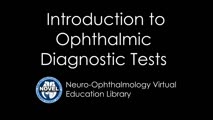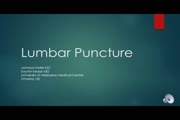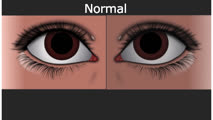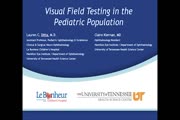Collection of materials relating to neuro-ophthalmology as part of the Neuro-Ophthalmology Virtual Education Library.
NOVEL: https://novel.utah.edu/
TO
| Title | Creator | Description | Subject | ||
|---|---|---|---|---|---|
| 26 |
 |
Introduction to Funduscopic Examination | Valérie Biousse, MD | Introduction to the funduscopic examination section of the NExT curriculum. | Exams; Funduscopy |
| 27 |
 |
Introduction to Ocular Examination | Ore-ofe Adesina, MD | Introduction to the Ocular Examination section of the NExT curriculum. | Exams; Ocular Examination |
| 28 |
 |
Introduction to Ophthalmic Diagnostic Tests | Valérie Biousse, MD | Introduction to the ophthalmic diagnostic testing section of the NExT curriculum. | Exams; Diagnostics |
| 29 |
 |
Introduction to the Evaluation of Visual Function | Sean Gratton, MD | An introduction to evaluating a patient's visual function. | Visual Function |
| 30 |
 |
Introduction to the Slit Lamp and the Slit Lamp Examination | Chris Bair, MD and Tyler Quist, MD | This brief video from fourth-year medical students Chris Bair and Tyler Quist discusses the details of your ophthalmology rotation at the Moran Eye Center, as well as providing a primer on how to use the slit lamp and perform a basic eye exam. | Medical Student; Exam; Education |
| 31 |
 |
Limb-Kinetic Apraxia | James R. Bateman, MD, MPH; Victoria S. Pelak, MD | Introduction to the limb kinetic apraxia exam as part of the larger mental status examination. Video accompanies the The Mental Status Examination lecture at https://collections.lib.utah.edu/ark:/87278/s64b7716 and Cognitive Assessment at: https://collections.lib.utah.edu/ark:/87278/s6qc49rx | Mental Status |
| 32 |
 |
Lumbar Puncture | Jamison Hofer, DO; Sachin Kedar, MD | Explanation of lumbar puncture procedure. | Lumbar Puncture |
| 33 |
 |
Normal Light Reflex and Relative Afferent Pupillary Defect (RAPD) | Marshall Huang, 4th Year Medical Student | A Relative Afferent Pupillary Defect is an examination finding in patients who have an asymmetric pupillary reaction to light when it is shined back and forth between the two eyes. It is most commonly a sign of asymmetric optic nerve disease or damage but can also present in widespread asymmetric r... | Light Reflex; RAPD |
| 34 |
 |
Other Special Situations | John Pula, MD | Introduction to examinations in special situations. | Exams |
| 35 |
 |
Red Color Desaturation | Sean Gratton, MD | Exploring red color desaturation. | Red Color Desaturation |
| 36 |
 |
Refraction | Sean Gratton, MD | An introduction to refraction. | Refraction |
| 37 |
 |
Visual Field Testing in the Pediatric Population | Lauren C. Ditta, MD | Visual field testing can be performed in the pediatric population with ease, however the proper technique for testing must be utilized and is tailored to each child's unique clinical situation and age. Confrontation visual field testing is a quick and easy; test that can yield a rough assessment of ... | Visual Field Testing; Pediatric; Confrontation Visual Field; Automated; Perimetry |
